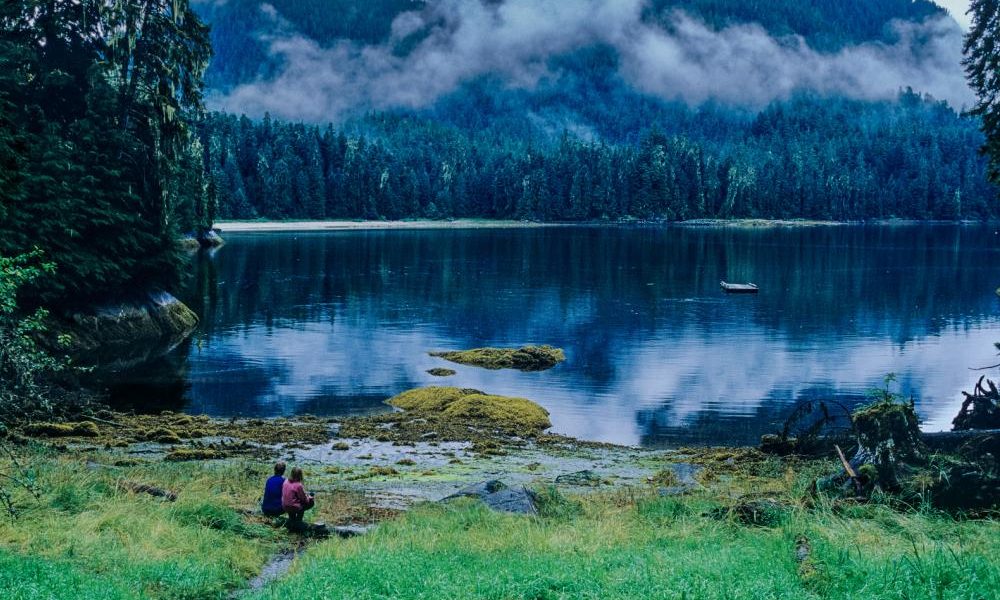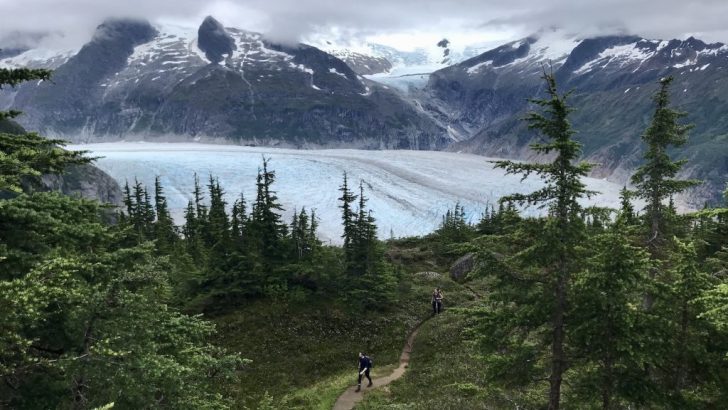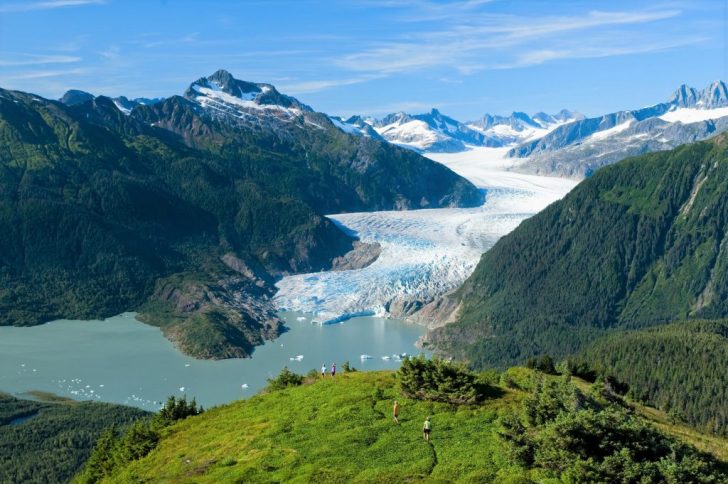
Visit Tongass National Forest, the World’s Largest Temperate Rainforest

Tongass National Forest is where wild meets massive. It is the largest temperate rainforest on Earth, spreading across a jaw-dropping 16.7 million acres in Southeast Alaska. That is bigger than ten U.S. states. Here, you will find a maze of old-growth trees, icy fjords, and wildlife straight out of a nature documentary.
The forest is part of the Pacific temperate rainforest ecoregion, stretching all the way from Alaska to Northern California. But Tongass is the crown jewel. With over 30,000 islands, inlets, and waterways, it is a tangled, rugged paradise. And yes, it rains a lot. But that is what keeps everything so green, wild, and alive.
Glaciers and Fjords Everywhere
One of the first things you will notice in Tongass National Forest is how the land meets the sea. Misty Fjords, near Ketchikan, is like stepping into another world. Towering 3,000-foot cliffs rise from the water, dripping with waterfalls and wrapped in clouds. It is quiet, eerie, and unforgettable.
Farther north, Tracy Arm Fjord slices deep into the mainland. Icebergs bob in the water, and the glaciers here are still active, still calving. When a piece of ice the size of a house crashes into the sea, it is loud, sudden, and completely real.

Travel / Tongass National Forest is one of the best places in the world to spot wild animals in their element. It is home to brown bears, black bears, and even rare spirit bears.
At Anan Wildlife Observatory, you can watch them fish for salmon just a few feet away. No zoo glass, just raw nature.
And it is not just bears. Bald eagles fill the sky. Humpback whales breach near the shore. Otters, sea lions, and porpoises play in the waves. All five species of Pacific salmon spawn in these rivers.
Trees Here are Older Than Most Countries
The old-growth forests of Tongass are like walking through time. Some of the cedar, spruce, and hemlock trees are over 1,000 years old. They are massive, wide, and draped in moss. It feels more like a cathedral than a forest.
These ancient trees play a major role in soaking up carbon from the atmosphere. Scientists call it carbon sequestration. Tongass acts like a giant sponge for CO₂, making it a key player in the fight against climate change.
Deep Roots and Living Cultures
Tongass National Forest is home to the Tlingit, Haida, and Tshimsian peoples. Their stories, traditions, and art are tied deeply to the land. Totem poles rise from village grounds, carved with symbols that hold centuries of meaning.
For many Indigenous people, the forest is still their grocery store, pharmacy, and hardware shop. Berries, fish, bark, and game have supported generations. Today, you will find cultural centers and guided experiences that show how alive and important these traditions still are.

Nature Wanders / Most folks enter the Tongass National Forest through towns like Ketchikan, Juneau, or Sitka. There are no roads connecting them, so you fly or ferry in.
But once you are there, the adventure options are endless. Hike to Nugget Falls near Mendenhall Glacier or paddle through quiet inlets in a sea kayak.
One of the best things about visiting Tongass National Forest is how open it is. You don’t need to book an expensive tour to enjoy it. Many trails, overlooks, and lakes are free and easy to reach from nearby towns. Locals are friendly and often full of tips on where to go.
For decades, the Tongass National Forest has been under pressure from industrial logging. Old-growth trees were cut down fast, sometimes with little thought to what was lost. But things are changing. New policies are shifting toward sustainable tourism and conservation.
More inOpen Your Mind
-
`
5 Doable Ways of Preventing High Blood Pressure (Hypertension)
Hypertension is sneaky. It usually shows no symptoms until it has done real damage. That is what makes it dangerous. If...
June 12, 2025 -
`
Nevada High School Student Arrested for Bringing Gun to Campus
In Nevada, a 10th-grade student at Community High School was arrested on Thursday afternoon after allegedly bringing a gun onto school...
June 6, 2025 -
`
Retirement Can Wreak Havoc on Your Mental Health. Here’s The Fix
Retirement sounds like a dream: No more meetings, no more commutes, and finally, time to do whatever you want. But retirement...
May 29, 2025 -
`
5 Must-Visit Spots in Peru for a Real Food Adventure
A real food adventure starts the second you land in Peru. This place doesn’t just serve food. It tells stories through...
May 22, 2025 -
`
5 Things to Do When Your Neighbors Follow a Weird Lifestyle
Some people just have a different lifestyle. That is fine, until it is not. When your neighbor’s lifestyle crosses the line...
May 14, 2025 -
`
5 Reasons Why You Should Invest in Community-Based Programs Now
Community nonprofits are essential. In Connecticut, they are the backbone of care for thousands of people who depend on mental health...
May 8, 2025 -
`
How to Steal Creative Ideas for Good
Open your mind! There are plenty of damn good ideas out there. You can adopt them to improve your life. Operating...
May 1, 2025 -
`
5 Ways to Discover the World Through Street Food
If you want to explore the essence of a country or a city, exploring its street food is your best bet....
April 23, 2025 -
`
Ozempic Weight Loss is Less Impressive Than Lifestyle Changes – Here’s Why
Weight loss is something most people work hard for. So, when a new drug like Ozempic comes along and makes it...
April 17, 2025















You must be logged in to post a comment Login